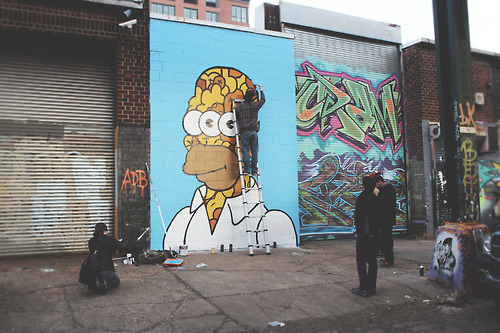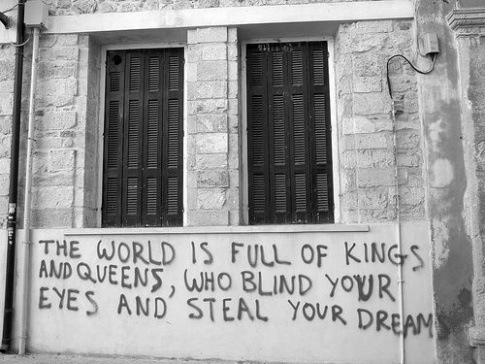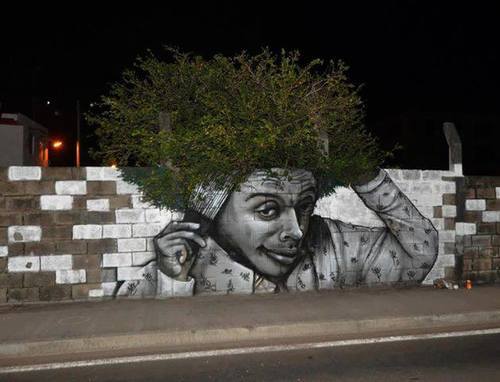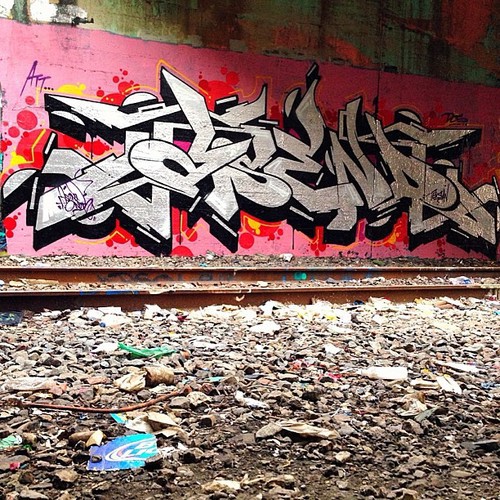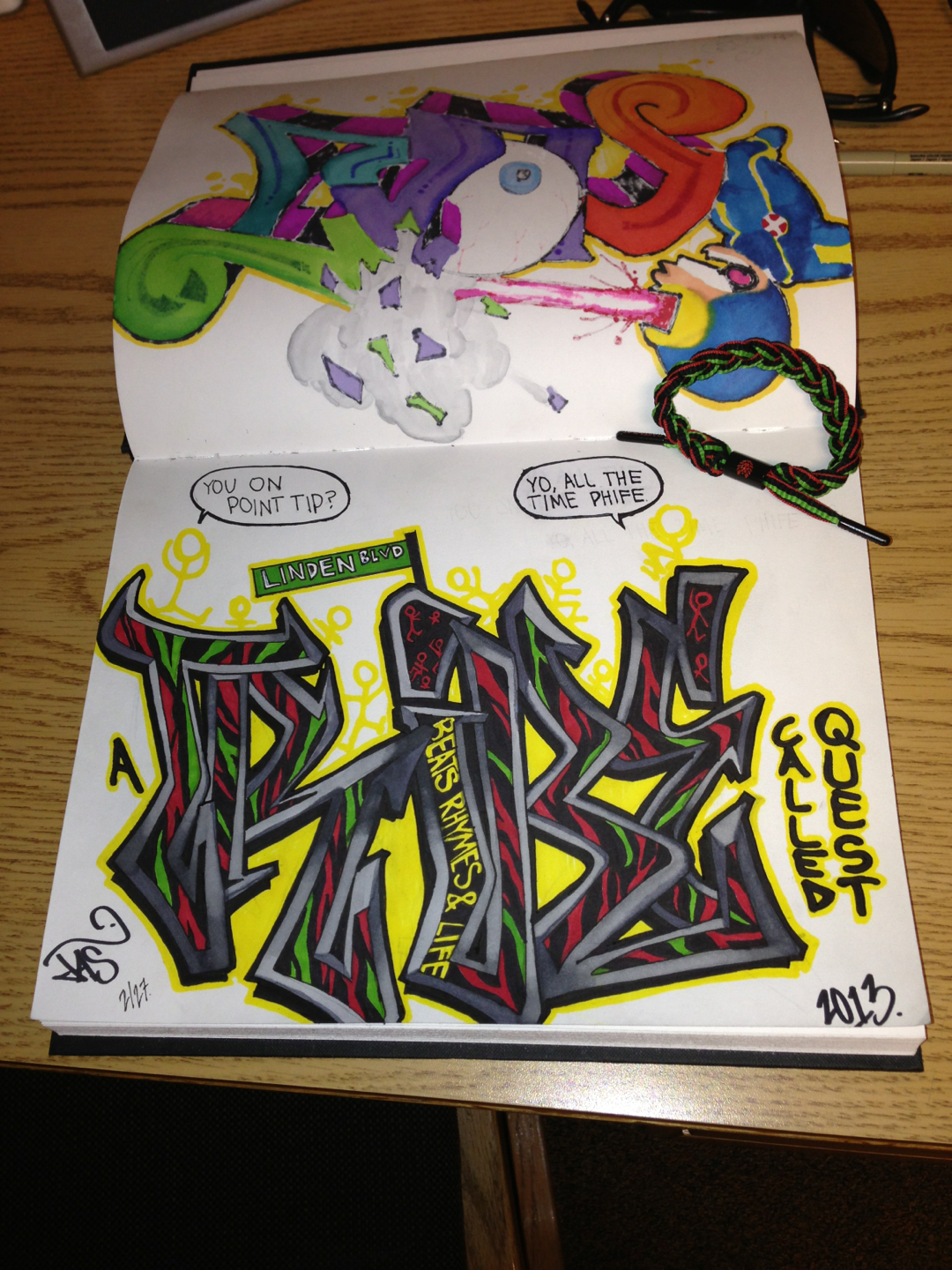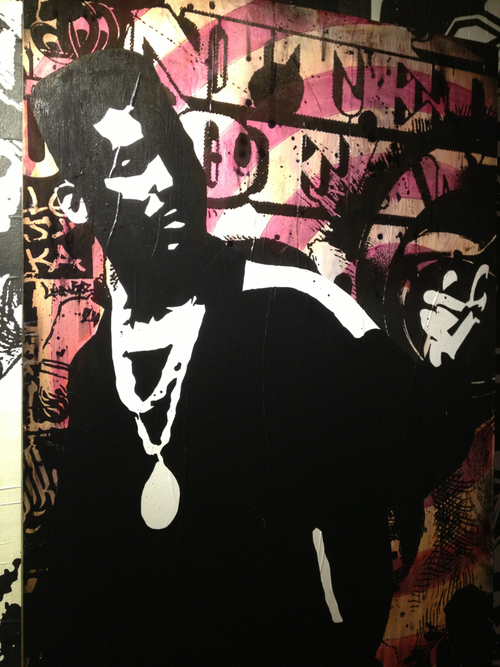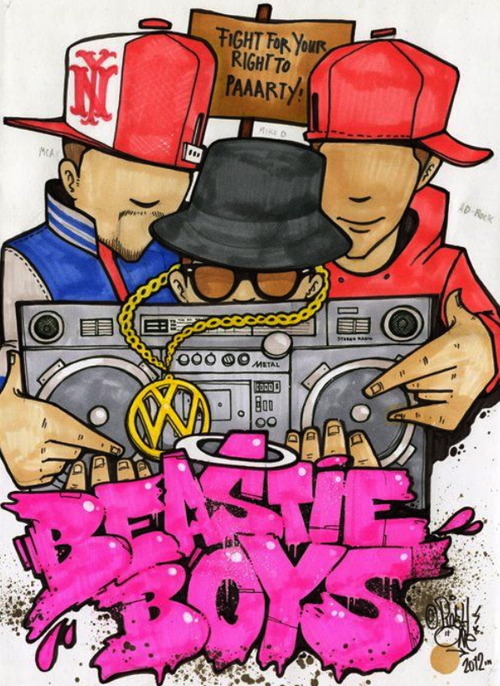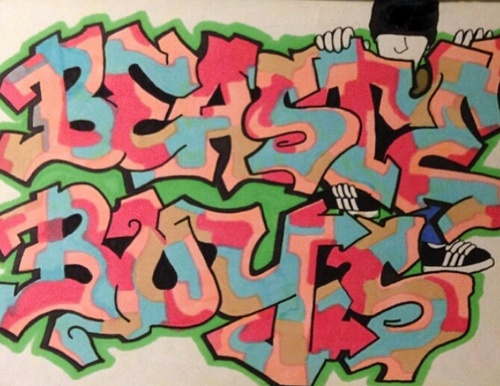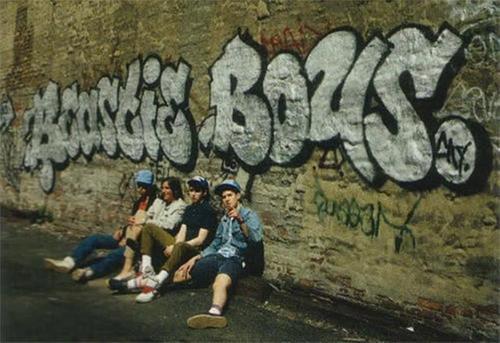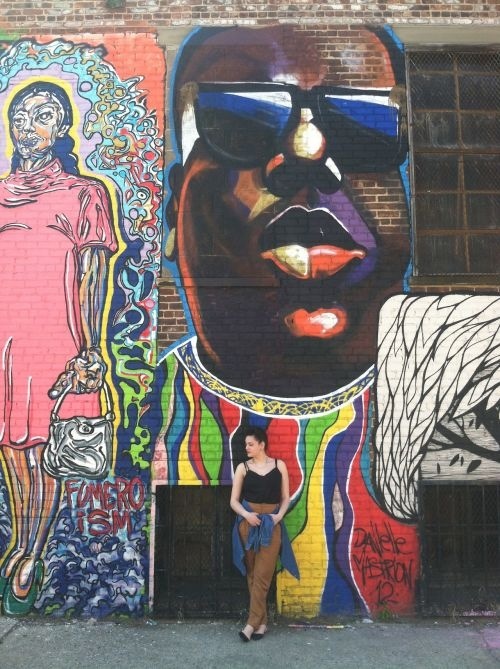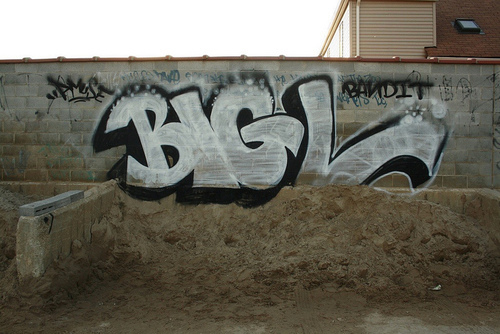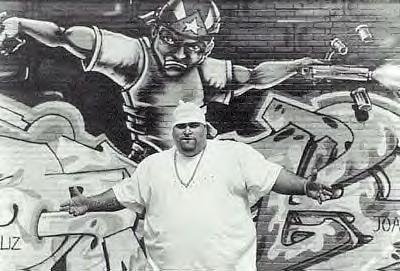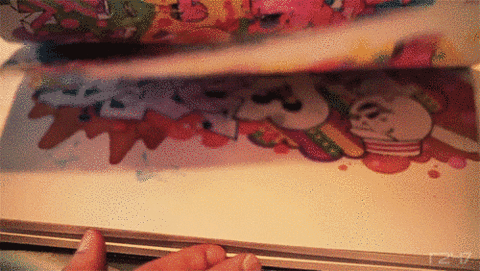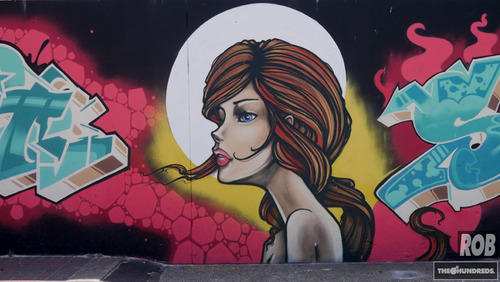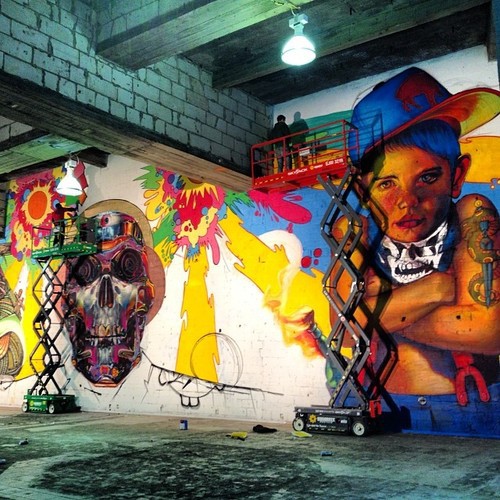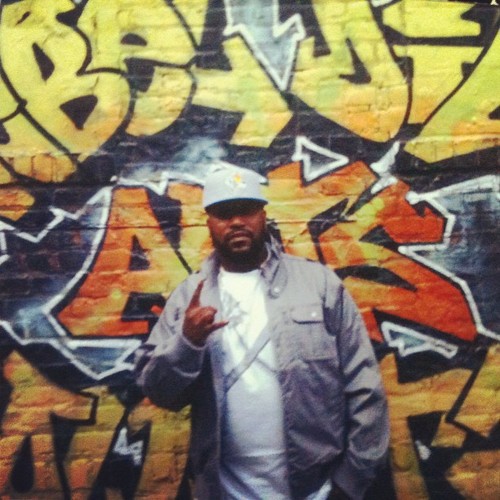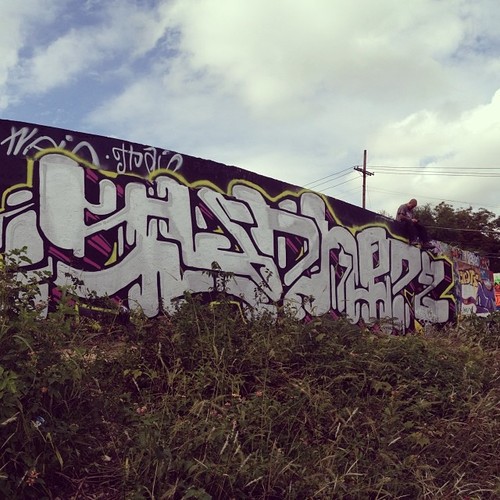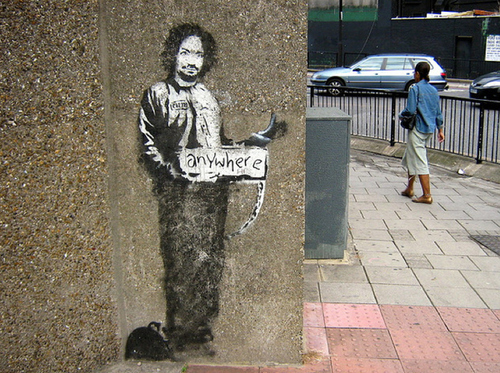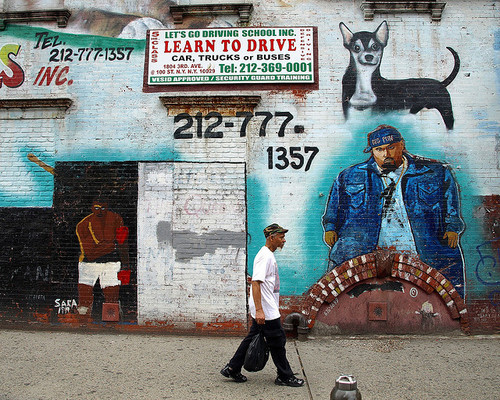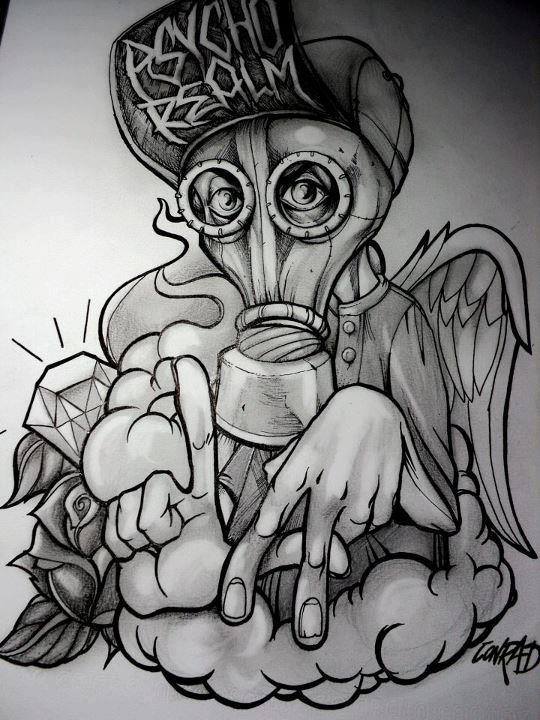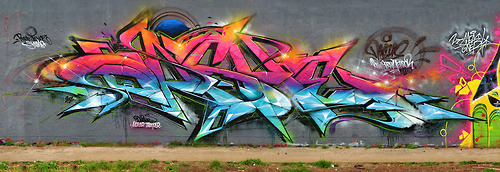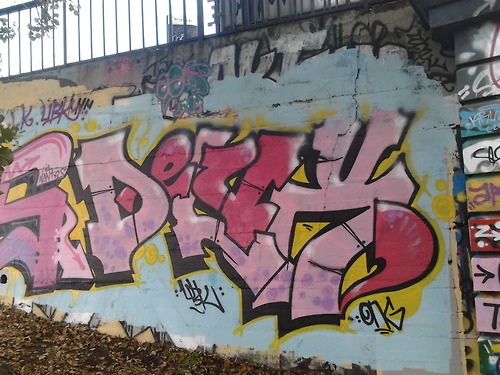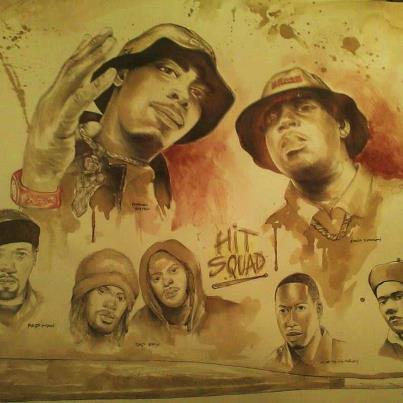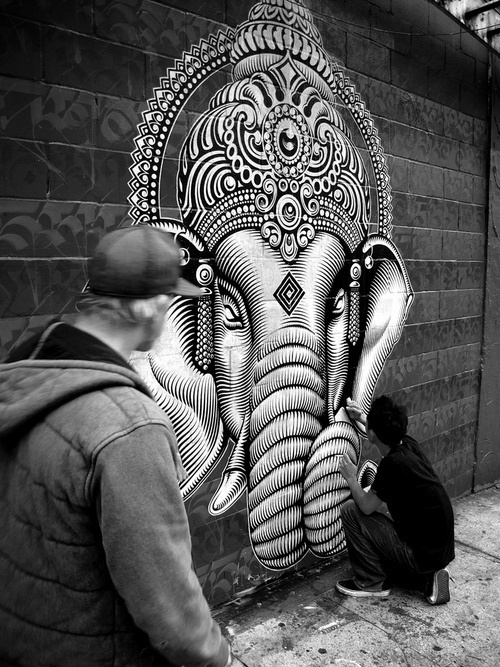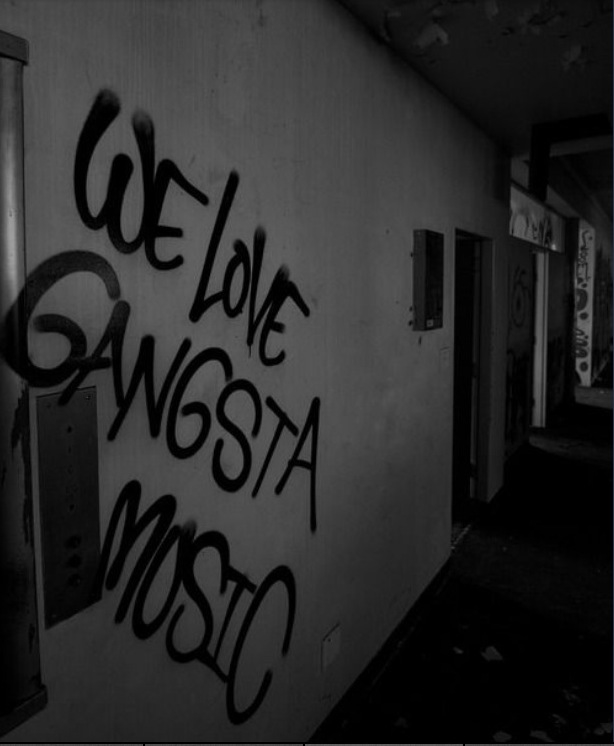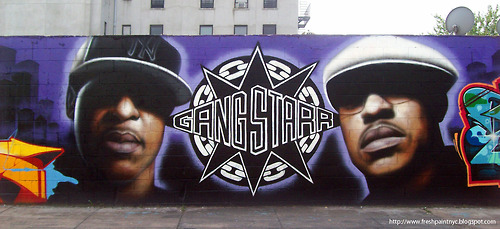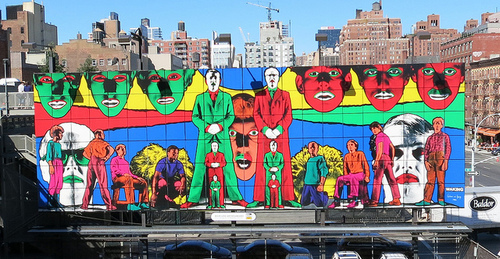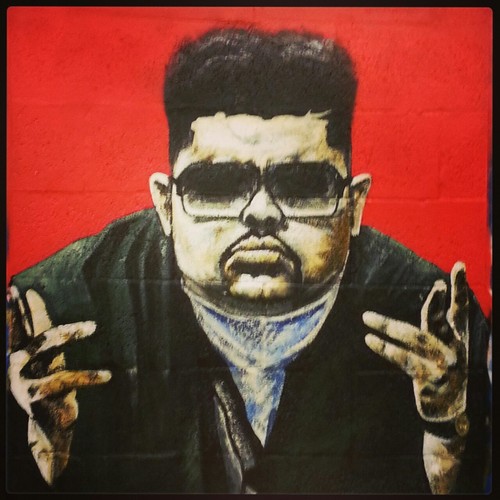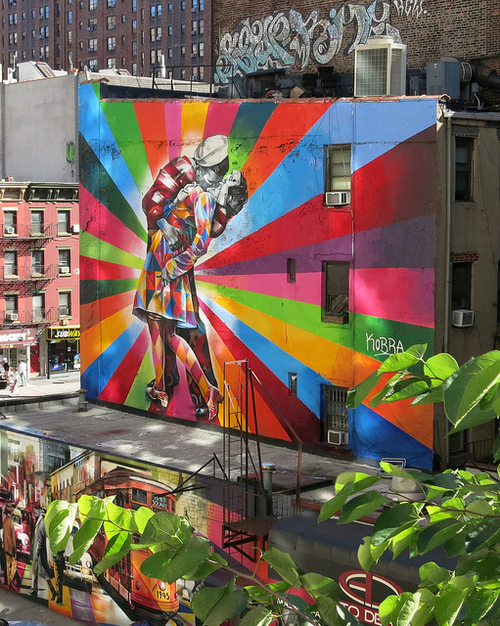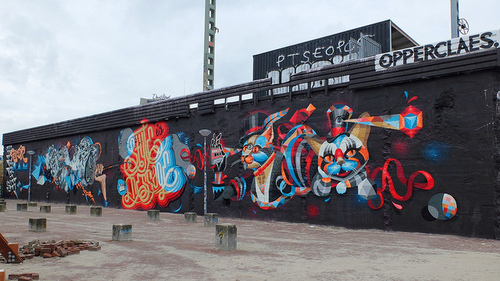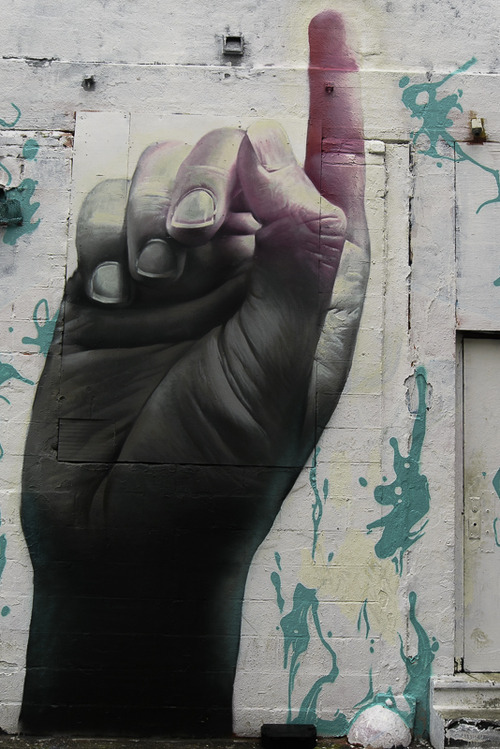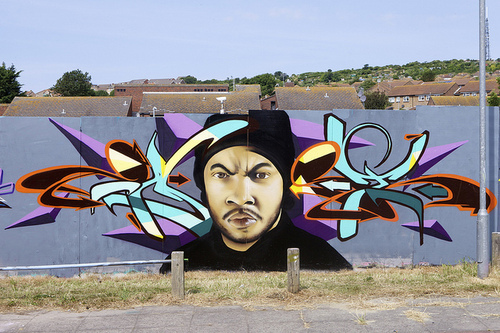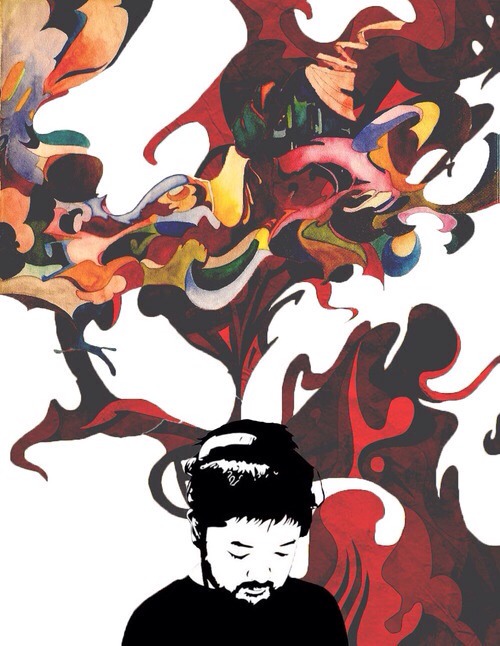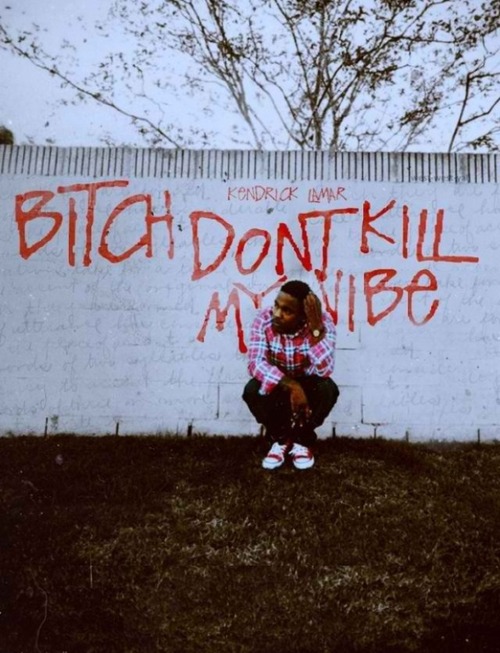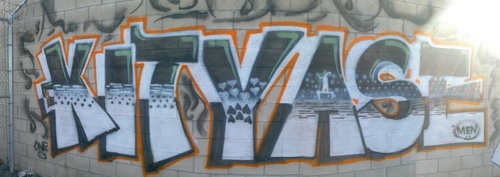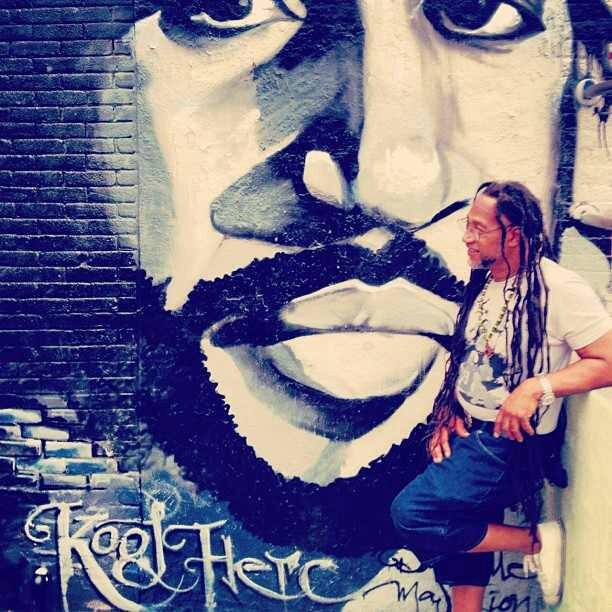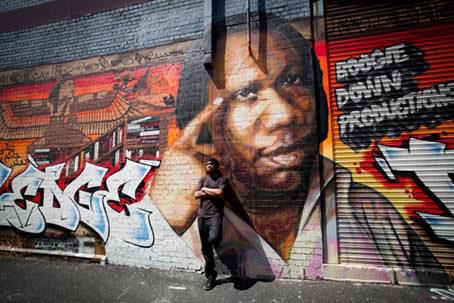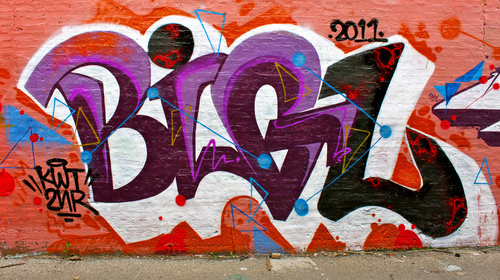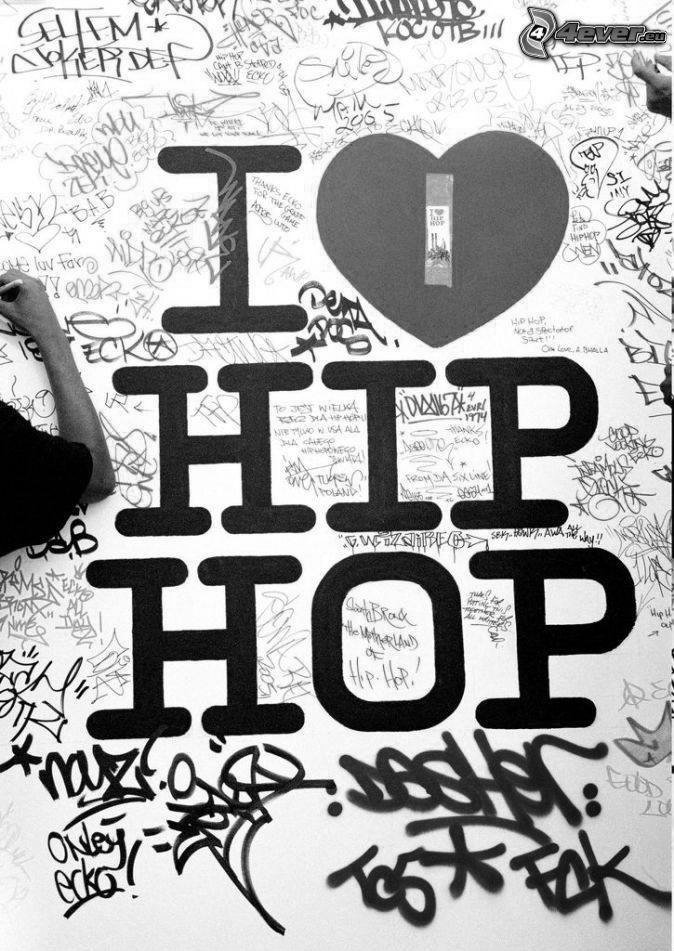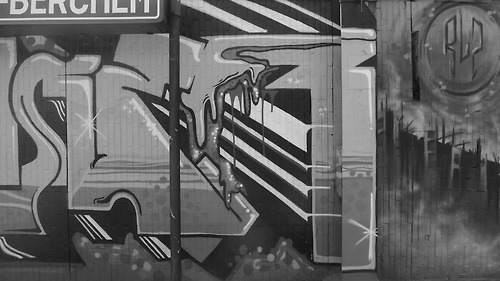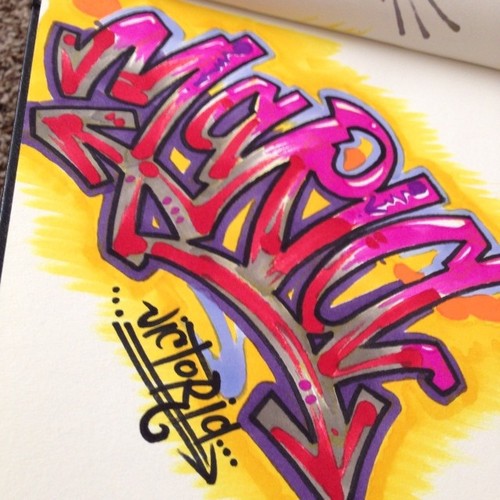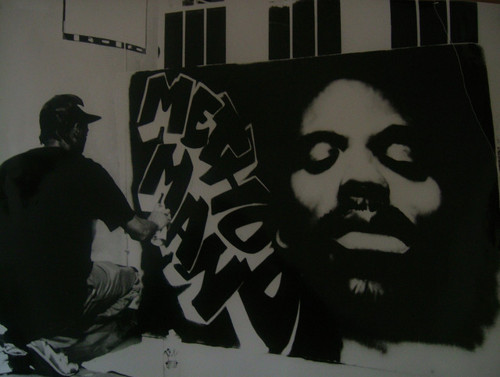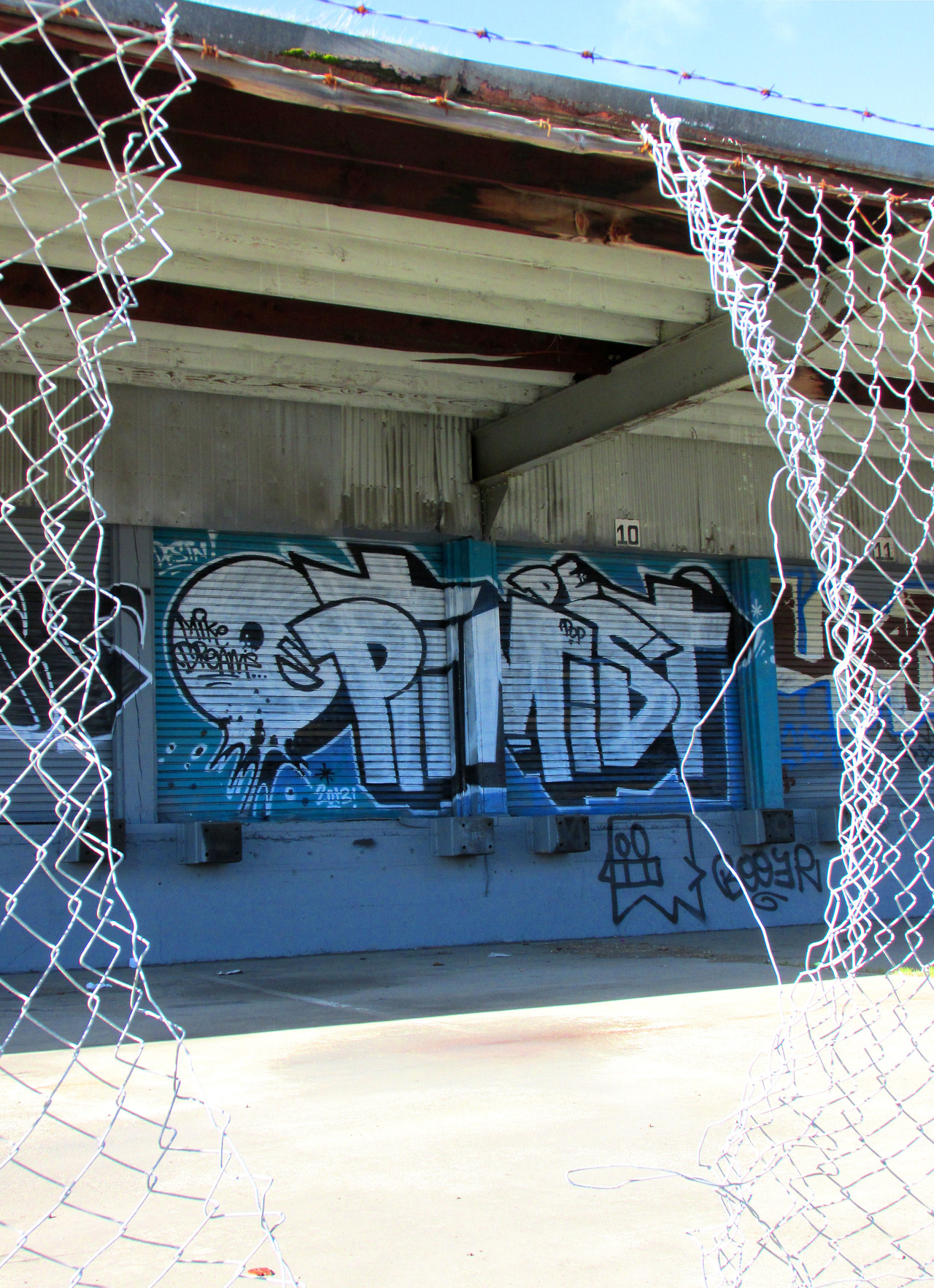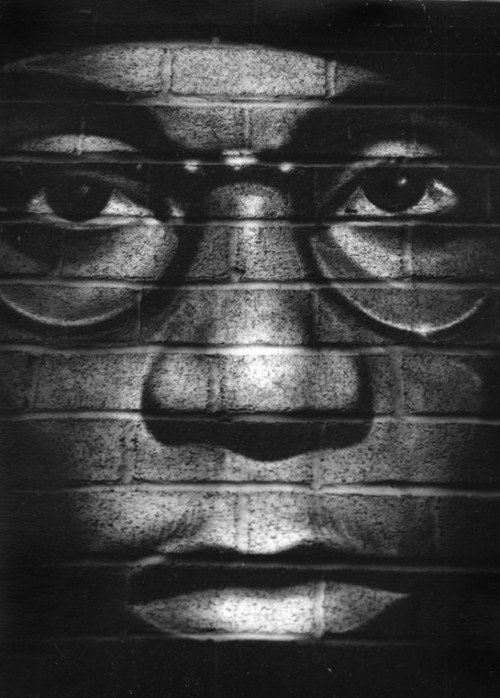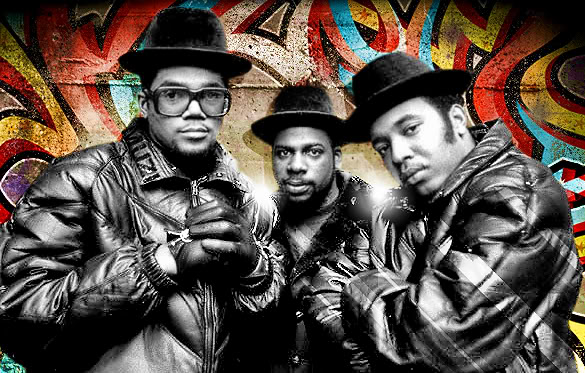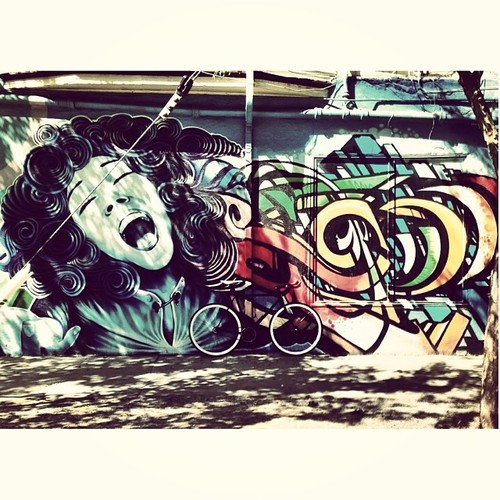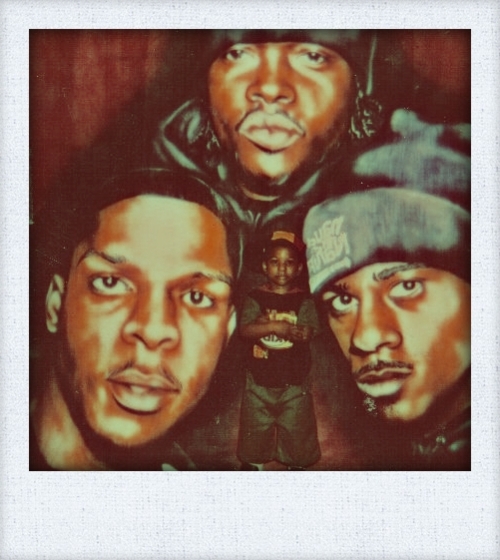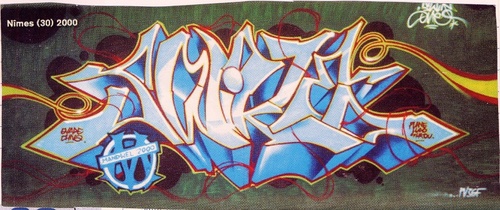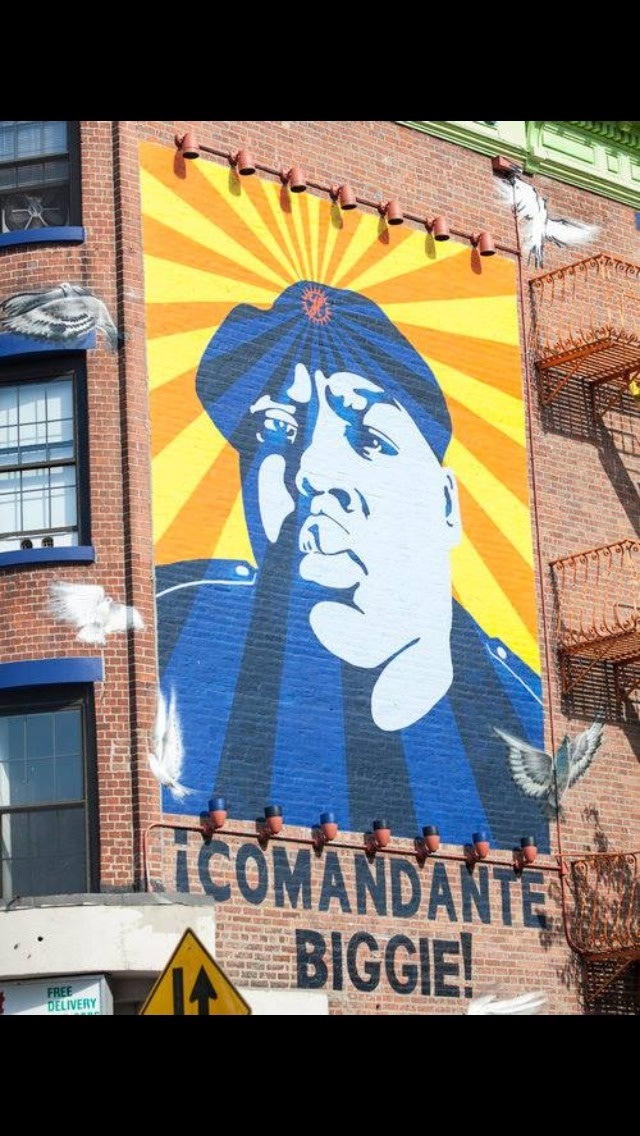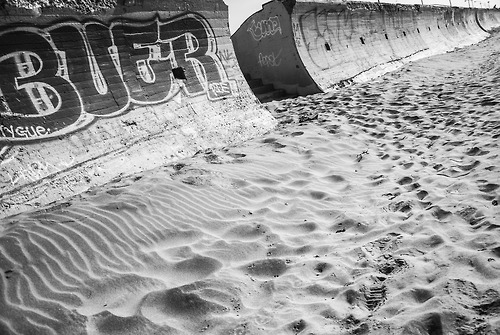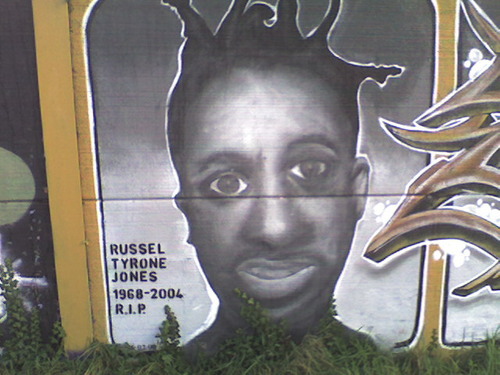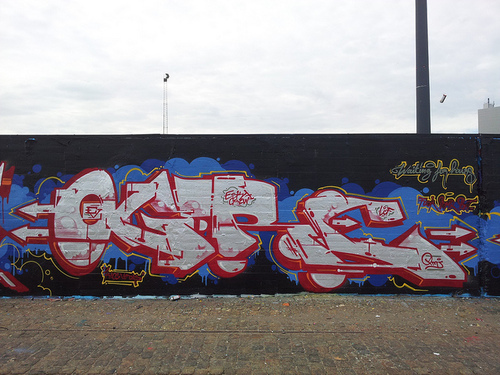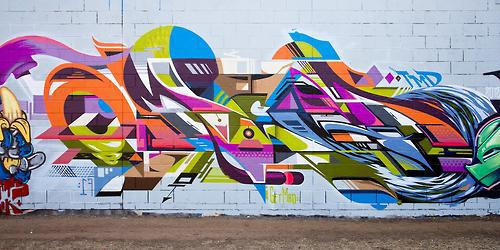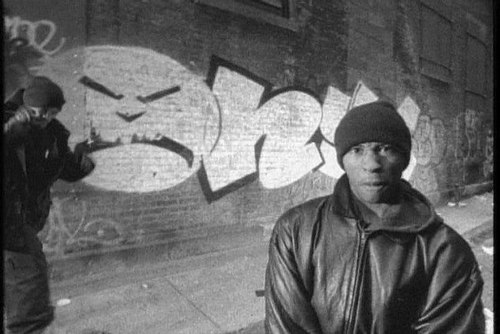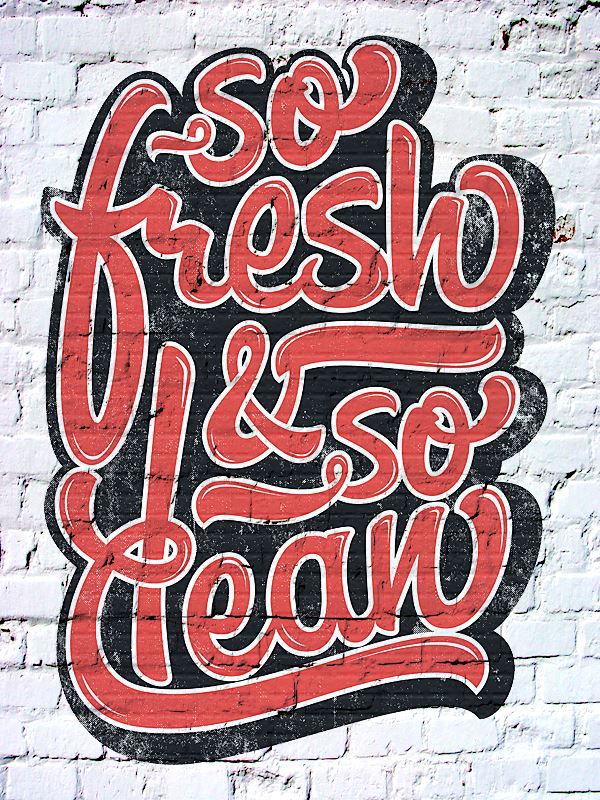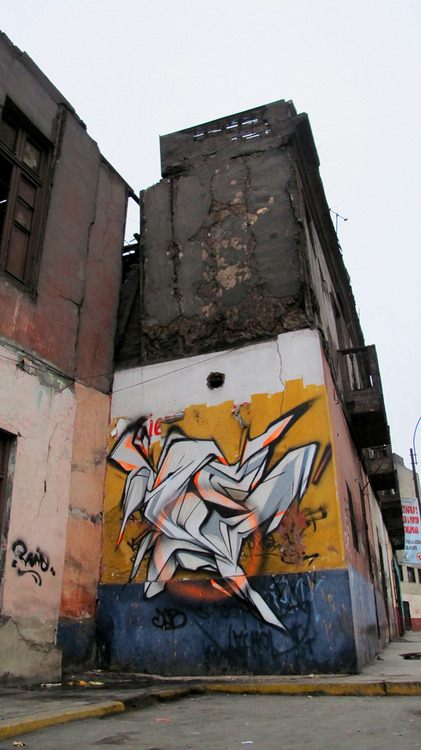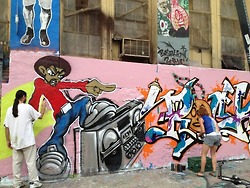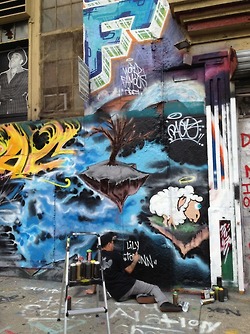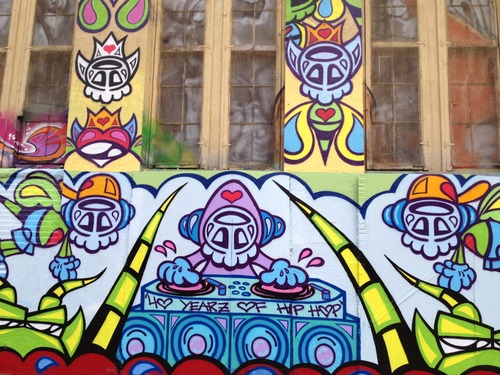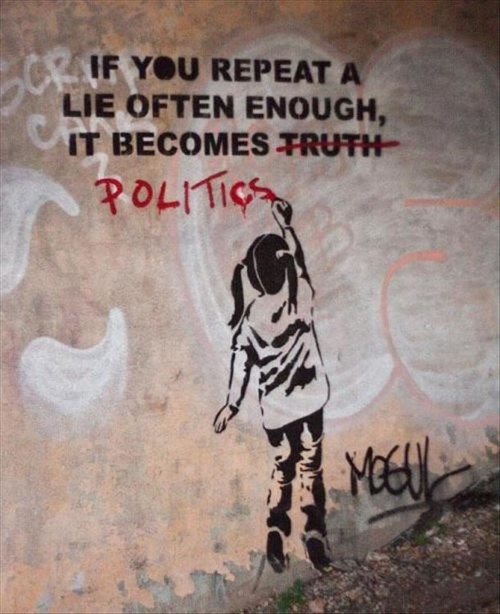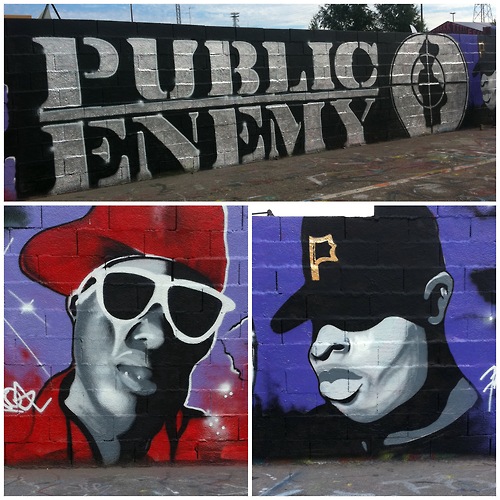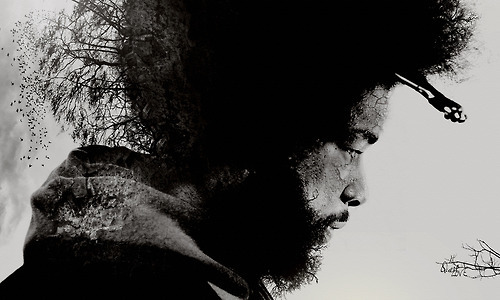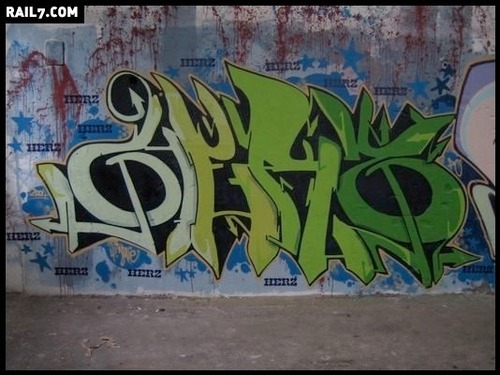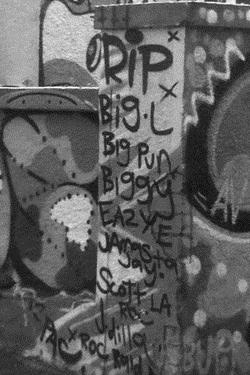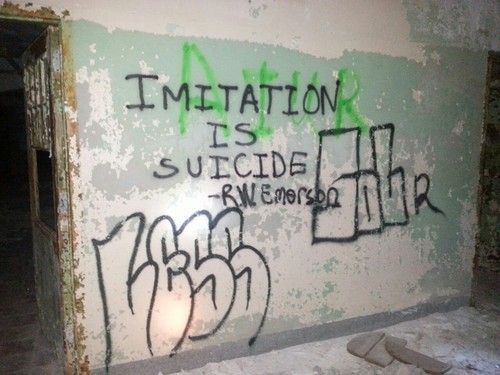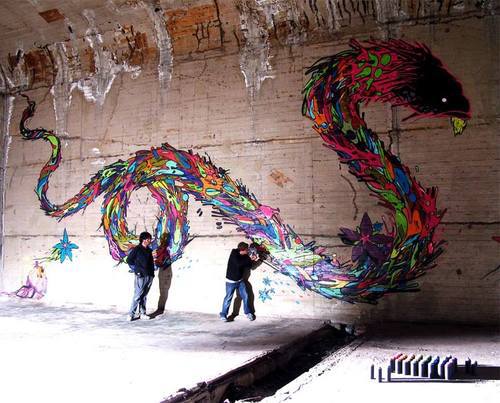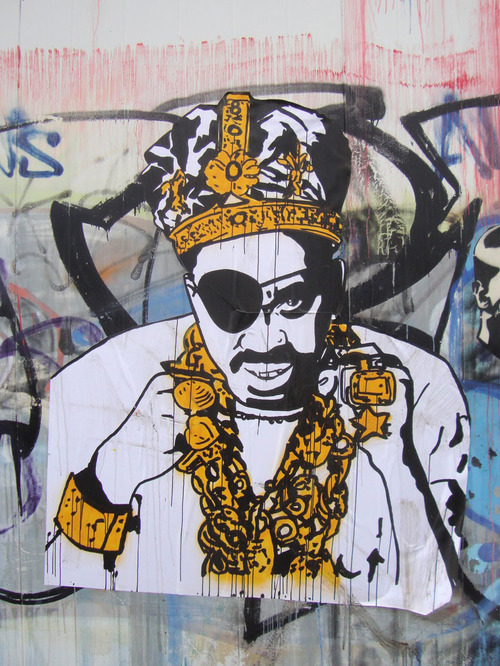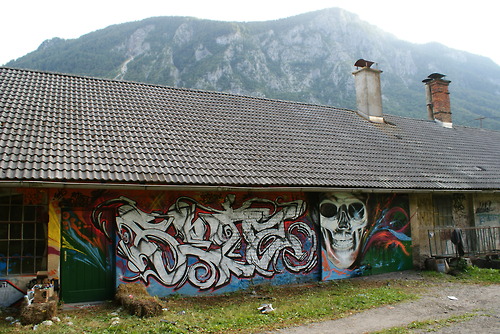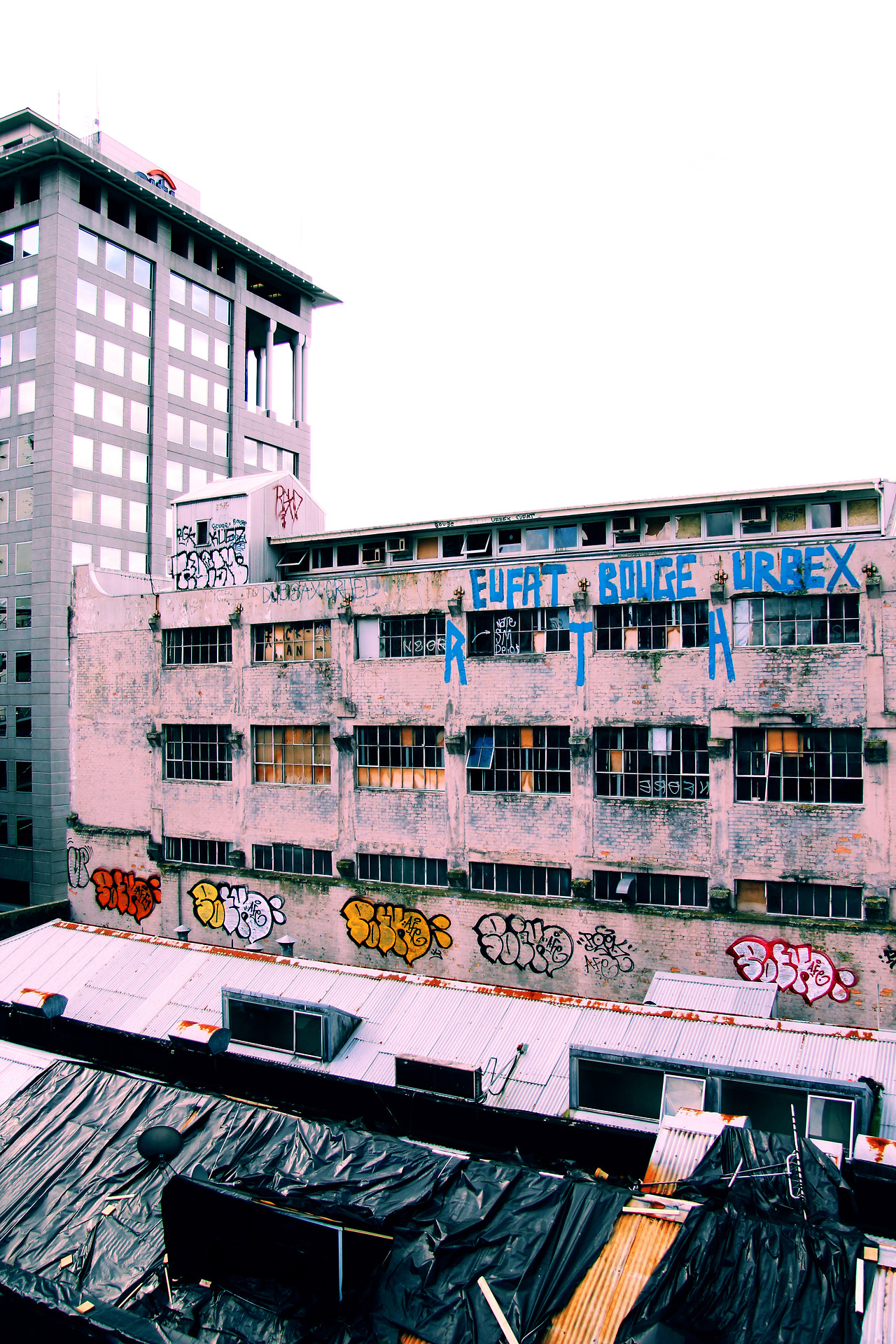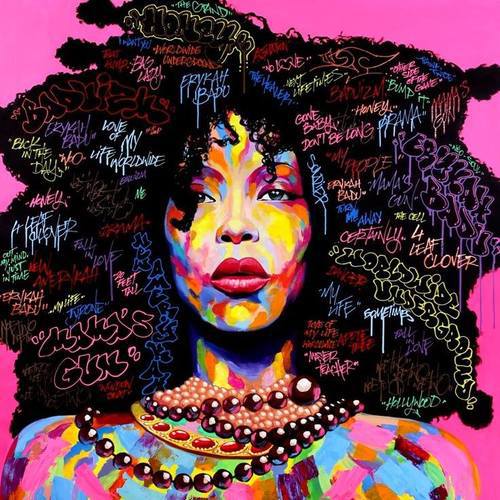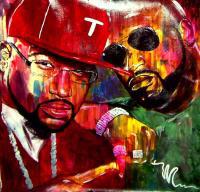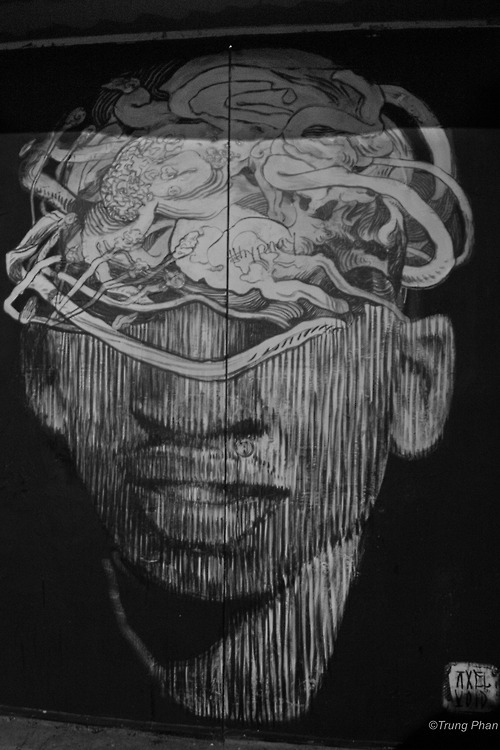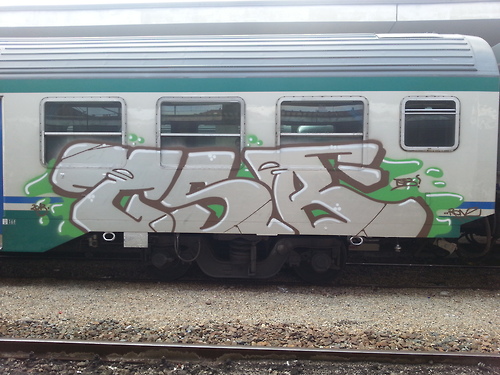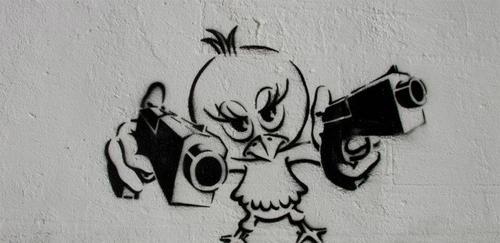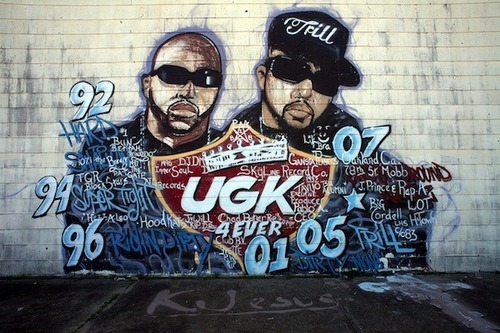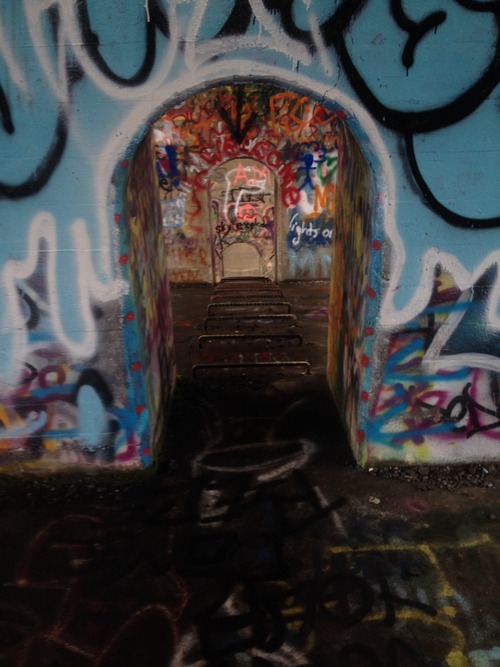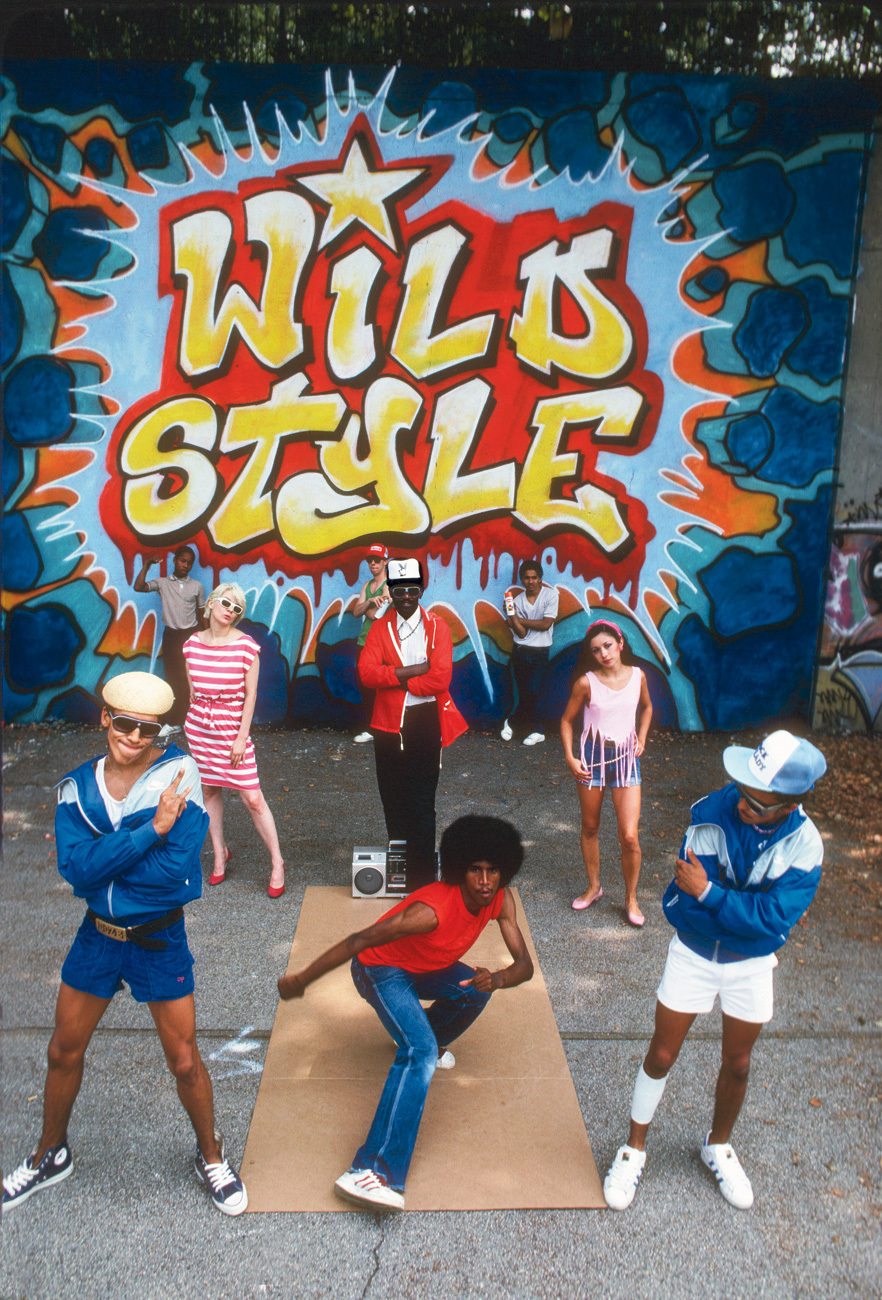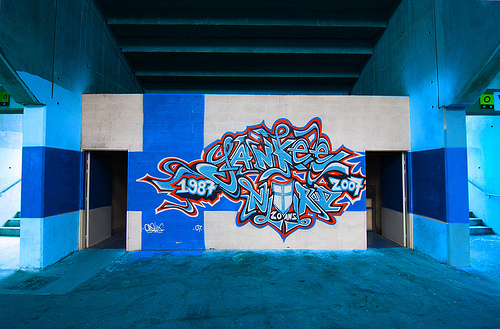Digital History of Graffiti
In 1979, graffiti artist Lee Quinones and Fab 5 Freddy were given a gallery opening in Rome by art dealer Claudio Bruni. For many outside of New York, it was their first encounter with their art form. Fab 5 Freddy's friendship with Debbie Harry influenced Blondie's single "Rapture" (Chrysalis, 1981), the video of which featured Jean-Michel Basquiat, and offered many their first glimpse of a depiction of elements of graffiti in hip hop culture. JaJaJa toured Germany, Switzerland, Belgium, and Holland with a large graffiti canvas as a backdrop.[17] Charlie Ahearn's independently released fiction film Wild Style (Wild Style, 1983), the early PBS documentary Style Wars (1983), hit songs such as "The Message" and "Planet Rock" and their accompanying music videos (both 1982) contributed to a growing interest outside New York in all aspects of hip hop.
Style Wars depicted not only famous graffiti artists such as Skeme, Dondi, MinOne, and ZEPHYR, but also reinforced graffiti's role within New York's emerging hip-hop culture by incorporating famous early break-dancing groups such as Rock Steady Crew into the film and featuring rap in the soundtrack. Style Wars is still recognized as the most prolific film representation of what was going on within the young hip hop culture of the early 1980s. Fab 5 Freddy and Futura 2000 took hip hop graffiti to Paris and London as part of the New York City Rap Tour in 1983. Hollywood also paid attention, consulting writers such as PHASE 2 as it depicted the culture and gave it international exposure in movies such as Beat Street (Orion, 1984).
With the popularity and legitimization of graffiti has come a level of commercialization. In 2001, computer giant IBM launched an advertising campaign in Chicago and San Francisco which involved people spray painting on sidewalks a peace symbol, a heart, and a penguin (Linux mascot), to represent "Peace, Love, and Linux." However due to laws forbidding it, some of the "street artists" were arrested and charged with vandalism, and IBM was fined more than US$120,000 for punitive damages and clean-up costs.
In 2005, a similar ad campaign was launched by Sony and executed by TATS CRU in New York, Chicago, Atlanta, Philadelphia, Los Angeles, and Miami to market its handheld PSP gaming system. In this campaign, taking notice of the legal problems of the IBM campaign, Sony paid building owners for the rights to paint on their buildings "a collection of dizzy-eyed urban kids playing with the PSP as if it were a skateboard, a paddle, or a rocking horse."
Along with the commercial growth has come the rise of video games also depicting graffiti, usually in a positive aspect – for example, the Jet Set Radio series (2000–2003) tells the story of a group of teens fighting the oppression of a totalitarian police force that attempts to limit the graffiti artists' freedom of speech. In plotlines mirroring the negative reaction of non-commercial artists to the commercialization of the art form by companies such as IBM (and, later, Sony itself) the Rakugaki Ōkoku series (2003–2005) for Sony's PlayStation 2 revolves around an anonymous hero and his magically imbued-with-life graffiti creations as they struggle against an evil king who only allows art to be produced which can benefit him. Following the original roots of modern graffiti as a political force came another game title, Marc Eckō's Getting Up: Contents Under Pressure (2006), featuring a story line involving fighting against a corrupt city and its oppression of free speech, as in the Jet Set Radio series.
Other games which feature graffiti include Bomb the World (2004), an online graffiti simulation created by graffiti artist Klark Kent where users can paint trains virtually at 20 locations worldwide, and Super Mario Sunshine (2002), in which the hero, Mario must clean the city of graffiti left by the villain, Bowser Jr. in a plotline which evokes the successes of the Anti-Graffiti Task Force of New York's Mayor Rudolph Giuliani (a manifestation of "broken window theory") or those of the "Graffiti Blasters" of Chicago's Mayor Richard M. Daley.
Numerous other non-graffiti-centric video games allow the player to produce graffiti (such as the Half-Life series, the Tony Hawk's series, The Urbz: Sims in the City, Rolling, and Grand Theft Auto: San Andreas). Counter-Strike which is a Half-Life mod allows users to create their own and tag in game. Many other titles contain in-game depictions of graffiti (such as The Darkness, Double Dragon 3: The Rosetta Stone, NetHack, Samurai Champloo: Sidetracked, The World Ends with You, The Warriors, Just Cause, Portal, various examples of Virtual Graffiti, etc.). There also exist a host of games where the term "graffiti" is used as a synonym for "drawing" (such as Yahoo! Graffiti, Graffiti, etc.).
In recent years, graffiti as a cultural aspect has seeped over into other aspects of art. Photographers such as have used graffiti in producing books such as Subway Art.
Contemporary advocates
Marc Ecko, an urban clothing designer, has been an advocate of graffiti as an art form during this period, stating that "Graffiti is without question the most powerful art movement in recent history and has been a driving inspiration throughout my career."
Henry Chalfant is one of the foremost advocates of modern graffiti, having produced the documentary film Style Wars and co-authored the books Subway Art and Spray Can Art. His most recent work, Henry Chalfant's Graffiti Archive: New York City's Subway Art and Artists displays his over 800 photographs of New York City Subway Graffiti Art.
Keith Haring was another well-known graffiti artist who brought Pop Art and graffiti to the commercial mainstream. In the 1980s, Haring opened his first Pop Shop: a store that offered everyone access to his works—which until then could only be found spray-painted on city walls. Pop Shop offered commodities such as bags and t-shirts. Haring explained that "The Pop Shop makes my work accessible. It's about participation on a big level, the point was that we didn't want to produce things that would cheapen the art. In other words, this was still art as statement".
Graffiti on a retaining wall in Upper Manhattan
Graffiti have become a common stepping stone for many members of both the art and design community in North America and abroad. Within the United States graffiti artists such as Mike Giant, Pursue, Rime, Noah, and countless others have made careers in skateboard, apparel, and shoe design for companies such as DC Shoes, Adidas, Rebel8, Osiris, or Circa Meanwhile there are many others such as DZINE, Daze, Blade, The Mac that have made the switch to gallery artists, often times not even using their initial medium, spray paint.
But perhaps the greatest example of graffiti artists infiltrating mainstream pop culture is by the French crew, 123Klan. 123Klan founded as a graffiti crew in 1989 by Scien and Klor, has gradually turned their hands to illustration and design while still maintaining their graffiti practice and style. In doing so they have designed and produced logos and illustrations, shoes, and fashion for the likes of Nike, Adidas, Lamborghini, Coca Cola, Stussy, Sony, Nasdaq, and more.
Some of the most common styles of graffiti have their own names. A "tag" is the most basic writing of an artist's name, it is simply a handstyle. A graffiti writer's tag is his or her personalized signature. Tagging is often the example given when opponents of graffiti refer to any acts of handstyle graffiti writing (it is by far the most common form of graffiti). Tags can contain subtle and sometimes cryptic messages, and might incorporate the artist's crew initials or other letters.
One form of tagging known as "pissing" is the act of taking a refillable fire extinguisher and replacing the contents inside with paint, allowing for tags as high as approximately 20 feet (6.1 m). Aiming and keeping a handstyle steady in this form of tagging is very difficult, usually coming out wavy and sloppy.
Another form is the "throw-up", also known as a "bombing" which is normally painted very quickly with two or three colors, sacrificing aesthetics for speed. Throw-ups can also be outlined on a surface with one color. A "piece" is a more elaborate representation of the artist's name, incorporating more stylized letters, usually incorporating a much larger range of colors. This of course, is more time consuming and increases the likelihood of the artist getting caught. A "blockbuster" or "roller" is a large piece, almost always done in a block-shaped style, done simply to cover a large area solidly with two contrasting colours, sometimes with the whole purpose of blocking other writers from painting on the same wall. These are usually accomplished with extended paint rollers and gallons of cheap exterior paint.
An example of the modern stencil graffiti, a very common style, in Toronto
A more complex style is "wildstyle", a form of graffiti usually involving interlocking letters and connecting points. These pieces are often harder to read by non-graffiti artists as the letters merge into one another in an often-undecipherable manner.
Some artists also use stickers as a quick way to do catch ups. While certain critics from within graffiti culture consider this lazy, stickers can be quite detailed in their own right and often, are used in conjunction with other materials. Sticker tags are commonly executed on blank postage stickers, as these can easily be acquired with no cost on the writers part.
Many graffiti artists believe that doing complex pieces involves too great an investment of time to justify the practice. Doing a piece can take (depending on experience and size) 30 minutes to months on end, as was the case for Saber MSK while working on the worlds largest graffiti piece on the LA river.
Another graffiti artist can go over a piece in a matter of minutes with a simple throw up. This was exemplified by the writer "CAP" in the documentary Style Wars, who, other writers complain, ruins pieces with his quick throw ups. This became known as "capping" and often is done when there is a "beef" – conflict between writers.
Theories on the use of graffiti by avant-garde artists have a history dating back at least to the Scandinavian Institute of Comparative Vandalism in 1961.
Many contemporary analysts and even art critics have begun to see artistic value in some graffiti and to recognize it as a form of public art. According to many art researchers, particularly in the Netherlands and in Los Angeles, that type of public art is, in fact an effective tool of social emancipation or, in the achievement of a political goal.
The murals of Belfast and of Los Angeles offer another example of official recognition. In times of conflict, such murals have offered a means of communication and self-expression for members of these socially, ethnically, or racially divided communities, and have proven themselves as effective tools in establishing dialog and thus, of addressing cleavages in the long run. The Berlin Wall was also extensively covered by graffiti reflecting social pressures relating to the oppressive Soviet rule over the GDR.
Unique use of graffiti as a method of expressing sexual orientation, Montclair, California
Many artists involved with graffiti are also concerned with the similar activity of stencilling. Essentially, this entails stenciling a print of one or more colors using spray-paint. Recognised while exhibiting and publishing several of her coloured stencils and paintings portraying the Sri Lankan Civil War and urban Britain in the early 2000s, graffiti artist Mathangi Arulpragasam, a.k.a. 'M.I.A.', has also become known for integrating her imagery of political violence into her music videos for singles "Galang" and "Bucky Done Gun", and her cover art. Stickers of her artwork also often appear around places such as London in Brick Lane, stuck to lamp posts and street signs, she having become a muse for other graffiti artists and painters worldwide in cities including Seville. Graffiti artist John Fekner, called "caption writer to the urban environment, adman for the opposition" by writer Lucy Lippard, was involved in direct art interventions within New York City's decaying urban environment in the mid-seventies through the eighties. Fekner is known for his word installations targeting social and political issues, stenciled on buildings throughout New York.
Anonymous artists
Graffiti artists constantly have the looming threat of facing consequences for displaying their graffiti. Many choose to protect their identities and reputation by remaining anonymous.
With the commercialization of graffiti (and hip hop in general), in most cases, even with legally painted "graffiti" art, graffiti artists tend to choose anonymity. This may be attributed to various reasons or a combination of reasons. Graffiti still remains the one of four hip hop elements that is not considered "performance art" despite the image of the "singing and dancing star" that sells hip hop culture to the mainstream. Being a graphic form of art, it might also be said that many graffiti artists still fall in the category of the introverted archetypal artist.
Banksy is one of the world's most notorious and popular street artists who continues to remain faceless in today's society. He is known for his political, anti-war stencil art mainly in Bristol, England, but his work may be seen anywhere from Los Angeles to Palestine. In the UK, Banksy is the most recognizable icon for this cultural artistic movement and keeps his identity a secret to avoid arrest. Much of Banksy's artwork may be seen around the streets of London and surrounding suburbs, although he has painted pictures throughout the world, including the Middle East, where he has painted on Israel's controversial West Bank barrier with satirical images of life on the other side. One depicted a hole in the wall with an idyllic beach, while another shows a mountain landscape on the other side. A number of exhibitions also have taken place since 2000, and recent works of art have fetched vast sums of money. Banksy's art is a prime example of the classic controversy: vandalism vs. art. Art supporters endorse his work distributed in urban areas as pieces of art and some councils, such as Bristol and Islington, have officially protected them, while officials fof other areas have deemed his work to be vandalism and have removed it.
Pixnit is another artist who chooses to keep her identity from the general public. Her work focuses on beauty and design aspects of graffiti as opposed to Banksy's anti-government shock value. Her paintings are often of flower designs above shops and stores in her local urban area of Cambridge, Massachusetts. Some store owners endorse her work and encourage others to do similar work as well. "One of the pieces was left up above Steve's Kitchen, because it looks pretty awesome"- Erin Scott, the manager of New England Comics in Allston.
Radical and political
'Resistance', found on a wall in Nablus, West Bank, Palestine in 2011
'R-Evolution' stencil graffiti critical of Vladimir Putin found in Moscow, Russia in 2012
A graffiti in Pieksämäki representing the former president of Finland, Urho Kekkonen, who is well recognised in Finnish popular culture
A preserved 1920 graffiti written on a wall in Sremska Street in Belgrade, Serbia, with the slogan Гласајте за Филипа Филиповића (Vote for Filip Filipović), who was the communist candidate for the mayor of Belgrade
An interpretation of Liberty Leading the People on the separation barrier which runs through Bethlehem
2nd WW bunker near Anhalter Bahnhof (Berlin) with a graffiti inscription „Wer Bunker baut, wirft Bomben“ (those who build bunkers, throw bombs).
Graffiti often has a reputation as part of a subculture that rebels against authority, although the considerations of the practitioners often diverge and can relate to a wide range of attitudes. It can express a political practice and can form just one tool in an array of resistance techniques. One early example includes the anarcho-punk band Crass, who conducted a campaign of stenciling anti-war, anarchist, feminist, and anti-consumerist messages throughout the London Underground system during the late 1970s and early 1980s.
In Amsterdam graffiti was a major part of the punk scene. The city was covered with names as 'De Zoot', 'Vendex', and 'Dr Rat'. To document the graffiti a punk magazine was started that was called Gallery Anus. So when hip hop came to Europe in the early 1980s there was already a vibrant graffiti culture.
Graffiti on the train line leading to Central Station in Amsterdam
The student protests and general strike of May 1968 saw Paris bedecked in revolutionary, anarchistic, and situationist slogans such as L'ennui est contre-révolutionnaire ("Boredom is counterrevolutionary") and Lisez moins, vivez plus ("Read less, live more"). While not exhaustive, the graffiti gave a sense of the 'millenarian' and rebellious spirit, tempered with a good deal of verbal wit, of the strikers.
"I think graffiti writing is a way of defining what our generation is like. Excuse the French, we're not a bunch of p---- artists. Traditionally artists have been considered soft and mellow people, a little bit kooky. Maybe we're a little bit more like pirates that way. We defend our territory, whatever space we steal to paint on, we defend it fiercely."
Sandra "Lady Pink" Fabara
The developments of graffiti art which took place in art galleries and colleges as well as "on the street" or "underground", contributed to the resurfacing in the 1990s of a far more overtly politicized art form in the subvertising, culture jamming, or tactical media movements. These movements or styles tend to classify the artists by their relationship to their social and economic contexts, since, in most countries, graffiti art remains illegal in many forms except when using non-permanent paint. Since the 1990s a growing number of artists are switching to non-permanent paints for a variety of reasons—but primarily because is it difficult for the police to apprehend them and for the courts to sentence or even convict a person for a protest that is as fleeting and less intrusive than marching in the streets. In some communities, such impermanent works survive longer than works created with permanent paints because the community views the work in the same vein as that of the civil protester who marches in the street—such protest are impermanent, but effective nevertheless.
In some areas where a number of artist share the impermanence ideal, there grows an informal competition. That is, the length of time that a work escapes destruction is related to the amount of respect the work garners in the community. A crude work that deserves little respect would be invariably removed immediately. The most talented artist might have works last for days.
Artists whose primary object is to assert control over property—and not primarily to create an expressive work of art, political or otherwise—resist switching to impermanent paints.
Feminist graffiti in A Coruña, Spain that reads: Basta de rosarios nos nossos ovarios (Galician: Keep your rosaries off our ovaries).
Contemporary practitioners, accordingly, have varied and often, conflicting practices. Some individuals, such as Alexander Brener, have used the medium to politicize other art forms, and have used the prison sentences enforced on them as a means of further protest.
The practices of anonymous groups and individuals also vary widely, and practitioners by no means always agree with each other's practices. The anti-capitalist art group, the Space Hijackers, for example, did a piece in 2004 about the contradiction between the capitalistic elements of Banksy and his use of political imagery.
On top of the political aspect of graffiti as a movement, political groups and individuals may also use graffiti as a tool to spread their point of view. This practice, due to its illegality, has generally become favored by groups excluded from the political mainstream (e.g. far-left or far-right groups) who justify their activity by pointing out that they do not have the money – or sometimes the desire – to buy advertising to get their message across, and that a "ruling class" or "establishment" controls the mainstream press, systematically excluding the radical and alternative point of view. This type of graffiti can seem crude; for example fascist supporters often scrawl swastikas and other Nazi images.
One innovative form of graffiti that emerged in the UK in the 1970s was devised by the Money Liberation Front (MLF), essentially a loose affiliation of underground press writers such as the poet and playwright Heathcote Williams and magazine editor and playwright Jay Jeff Jones. They initiated the use of paper currency as a medium for counterculture propaganda, overprinting banknotes, usually with a John Bull printing set. Although short lived, the MLF was representative of London's Ladbroke Grove centered alternative and literary community of the period. The area was also a scene of considerable anti-establishment and humorous street graffiti, much of which is also produced by Williams.
In 2009, following the elections in Iran, protesters (who regarded the electoral result as rigged) began to deface banknotes with slogans such as "Death to the dictator". In Colombia writing and drawing on banknotes has become increasingly popular, either to make political comments, for fun or as an artistic medium. The national government has run advertising campaigns in an attempt to discourage the practice. In the UK there have been signs of an MLF resurgence with a number of banknotes in circulation being over-marked with protest slogans such as "Banks=Robbers", relating to the perceived culpability of banks in the financial crisis.
Gates in a peace line in West Belfast, marking the boundary between segregated communities in Northern Ireland
Both sides of the conflict in Northern Ireland produce political graffiti. As well as slogans, Northern Irish political graffiti includes large wall paintings, referred to as murals. Along with the flying of flags and the painting of kerb stones, the murals serve a territorial purpose, often associated with gang use. Artists paint them mostly on house gables or on the Peace Lines, high walls that separate different communities.
The murals often develop over an extended period and tend to stylization, with a strong symbolic or iconographic content. Loyalist murals often refer to historical events dating from the war between James II and William III in the late seventeenth century, whereas Republican murals usually refer to the more recent troubles.
Territorial graffiti serves as marking ground to display tags and logos that differentiate certain groups from others. These images are meant to show outsiders a stern look at whose turf is whose. The subject matter of gang-related graffiti consists of cryptic symbols and initials strictly fashioned with unique calligraphies. Gang members use graffiti to designate membership throughout the gang, to differentiate rivals and associates and, most commonly, to mark borders which are both territorial and ideological.
(sources: wikipedia.org)


